
Key Findings
- 27% of dental professionals said they brush their teeth once a day or less.
- 48% of patients haven’t seen a dentist in over a year.
- Nearly 50% of patients brush their teeth once a day or less.
- Dental professionals say they dread dental appointments because of the hygienists (36%) and other dentists (34%).
In spite of the current spotlight on all things health - related, oral hygiene in the U.S. could still use some major (dental) work. As you’ll find out below, even the professionals are not beyond reproach, with some dental practitioners admitting to lapses in their own oral care.
After surveying just under 1,300 patients and dental professionals (including dental assistants, dental hygienists, dental lab technicians, general dentists, orthodontists, periodontists, and oral surgeons) from across the country, we have some recent insights to share about the state of oral hygiene in the U.S. Respondents reveal how much they spend on oral health each month, their preferred methods of tooth care, and their least favorite aspects of the dentistry experience. To benefit from this direct - from - their - mouths information, keep reading.
Teeth Today
How often do you brush your teeth, floss, gargle mouthwash, or use a tongue scraper? If your answer is less than twice a day, you may not be doing things correctly, but you’re also not alone. The first section of our study asked respondents how they currently practice oral hygiene.
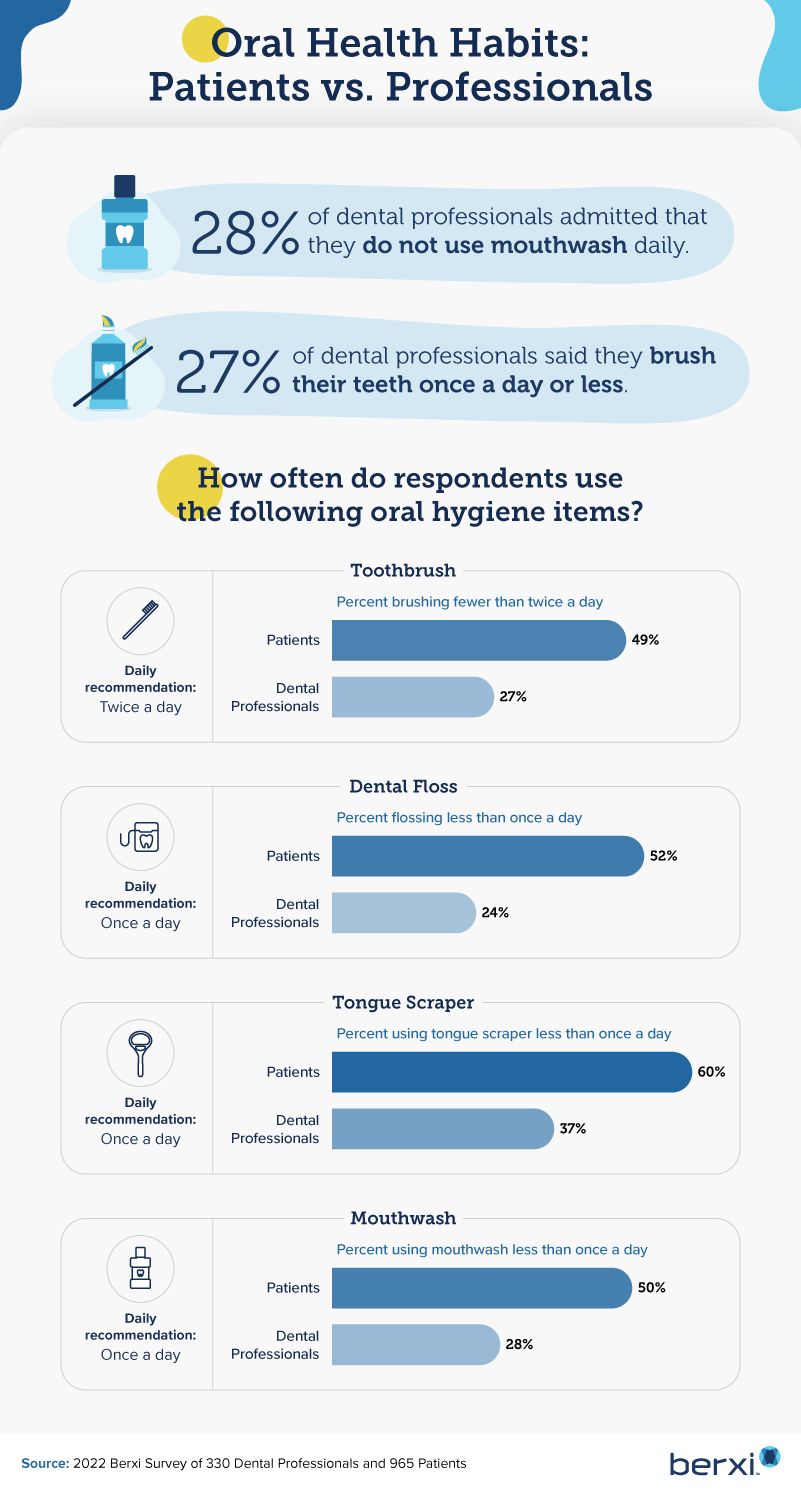
Surprisingly, dental professionals weren’t perfect in their oral hygiene practices. Over one in four of professionals reported failing to use mouthwash daily in spite of its “dentist - recommended” health benefits. Twenty - seven percent even admitted to brushing their teeth less than the American Dental Association recommendation of twice a day. And many skipped daily tongue scraping, in spite of the benefits attributed to this practice.
Nevertheless, dental professionals still demonstrated vastly better behaviors than their patients in everything from flossing to brushing. Fifty - two percent of patients flossed less than once a day, and nearly 50% brushed their teeth once a day or less. Almost one in four dental professionals even admitted to flossing less than the recommended once a day.
The Cost of a Healthy Mouth
The best dental health behaviors do not come free, with top - quality toothbrushes, flossers, and other instruments all adding up. The next section of our study asked patients and dental professionals to share how much they spend monthly on oral care and the cost breakdown across different products.
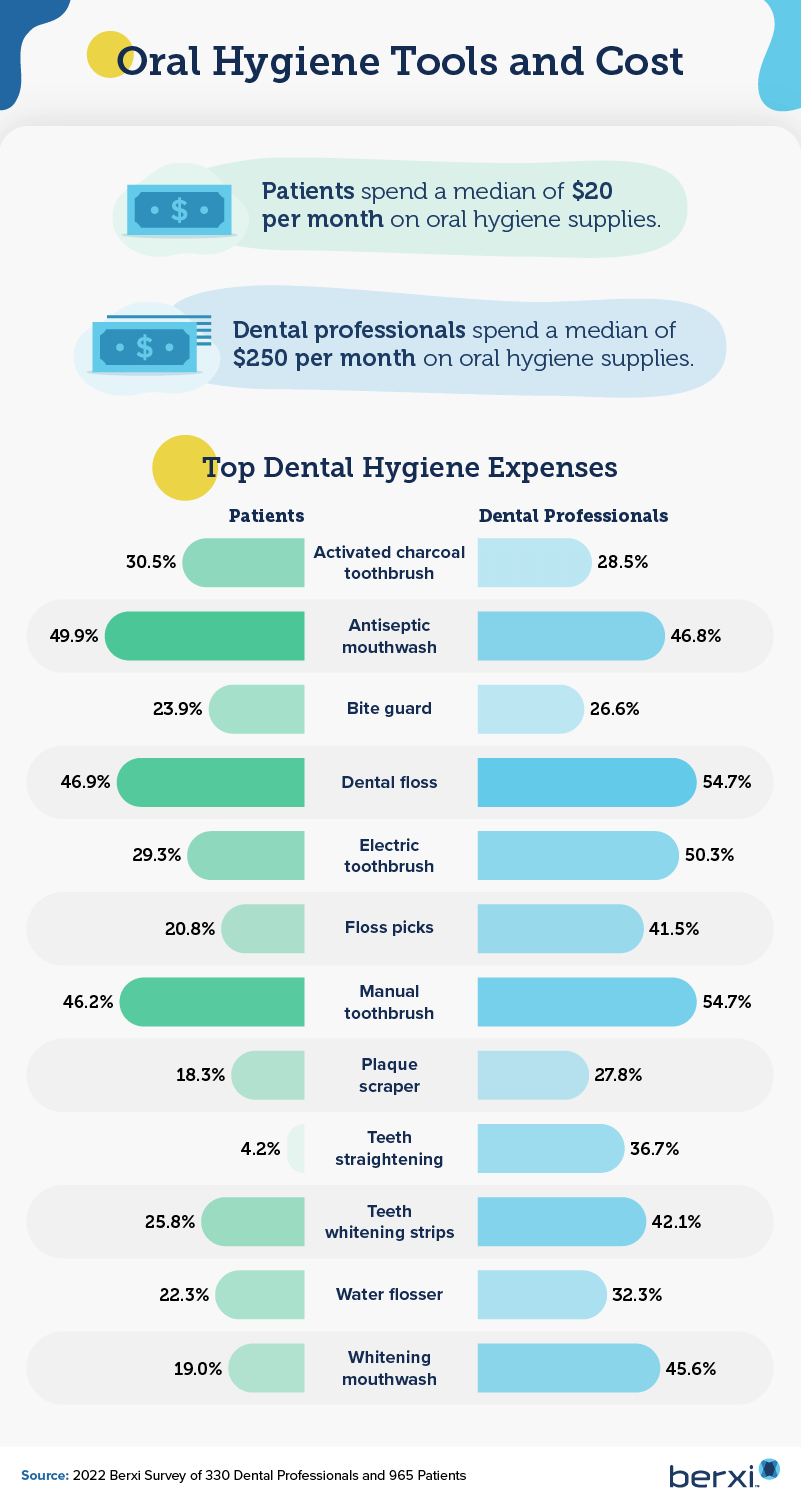
There was a significant difference in the median amount of money spent by patients on their dental care each month ($20) and the median spent by dental professionals ($250). Professionals’ higher bill was due to their propensity for purchasing more expensive items, such as an electric toothbrush versus a manual one or a water flosser as opposed to regular dental floss. They were also more likely to use whitening mouthwash and teeth whitening strips, which need to be replaced monthly when used regularly. The expense that most divided patients from professionals was teeth straightening: while just 4.2% of the average population spent money on this, 36.7% of dental practitioners did.
Visiting the Dentist
When you read the phrase “visiting the dentist,” how do you react emotionally? If your gut response is anxiety, you’re not alone. This section of the study gave both dental practitioners and patients a chance to share their dentistry - related fears.
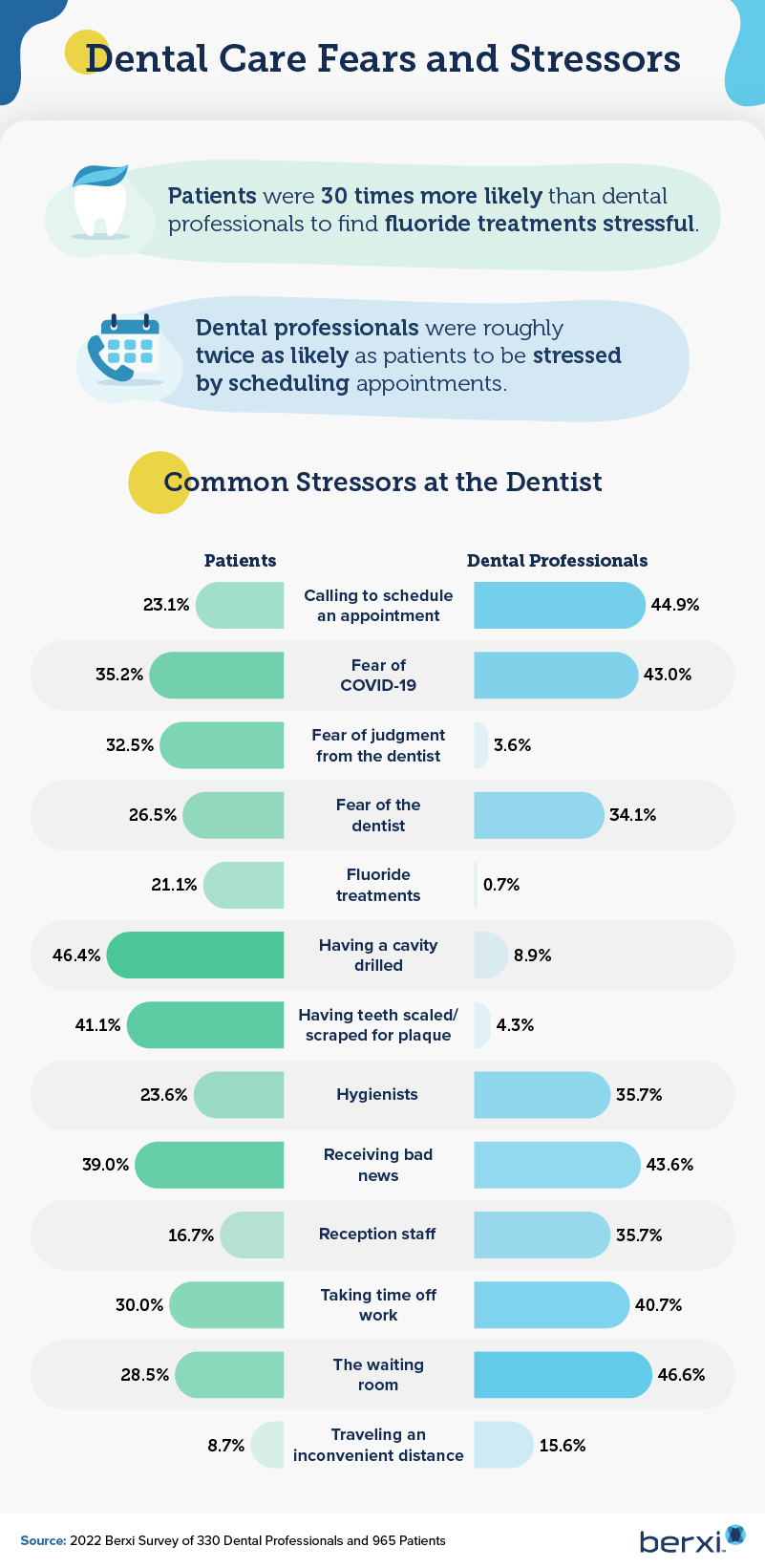
As expected, patients generally found the procedure - related aspects of visiting the dentist more stressful than did dental professionals. Even something as simple as a fluoride treatment was over 30 times more likely to be rated as stressful by patients than dentists. Other major concerns included having a cavity drilled (46.4%), having teeth scraped or scaled for plaque (41.1%), and the possibility of receiving bad news (39%).
Dental professionals certainly had some worries of their own, although these were often very different to those of their patients. The logistics of things like the waiting room (46.6%) and calling to schedule an appointment (44.9%) were particularly bothersome. On a more serious note, 43.0% reported a fear of contracting COVID-19 — something that is contributing to the burnout crisis currently being faced by many healthcare workers in the U.S.
What Brings People In?
In the next section of our study, we looked into the top reasons patients and dental professionals visit the dentist and how often they typically go.
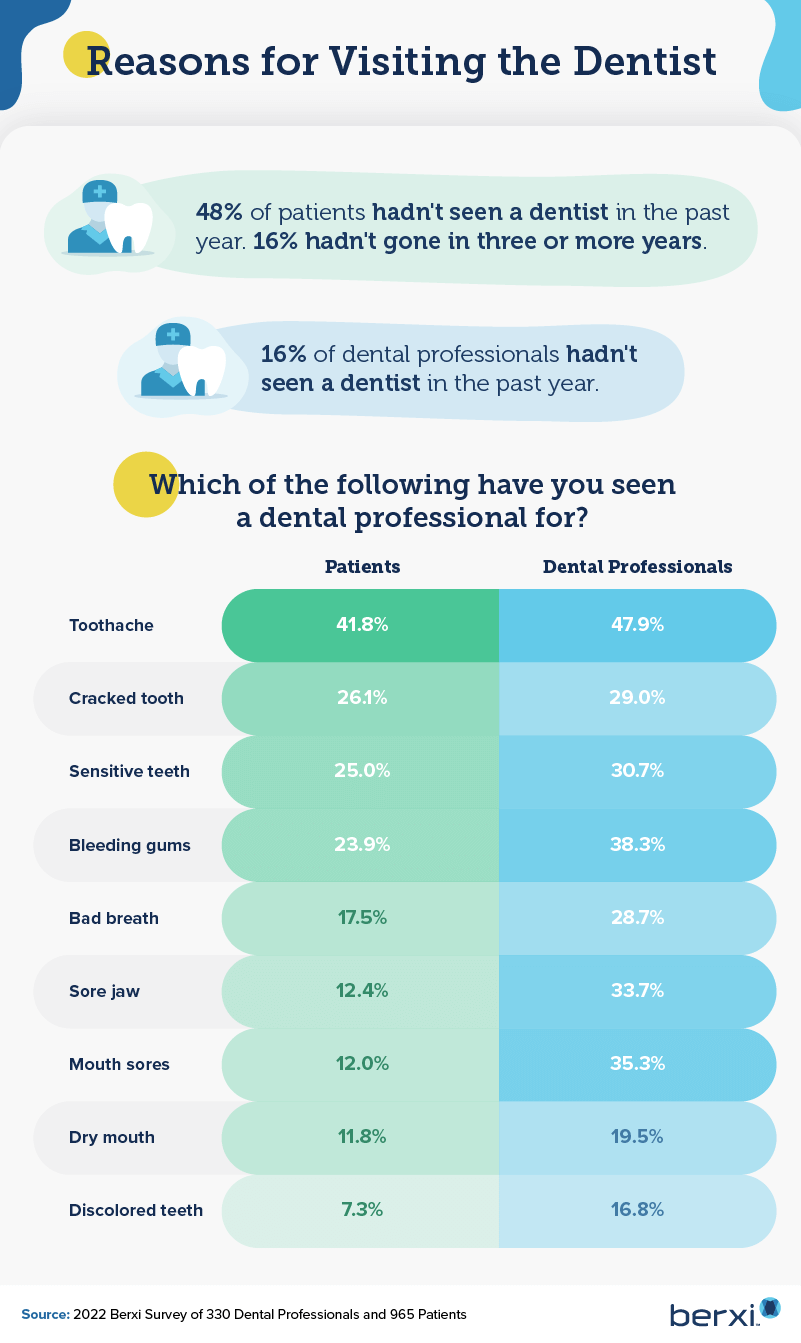
Evidently, the dentistry experience is stressful enough for some people to avoid it altogether — nearly half of the patients we surveyed had not visited their dentist in more than a year. For 16%, it was actually three or more years. When they did go in, it was for intense pain, such as that caused by a toothache (41.8%) or a cracked tooth (26.1%).
While most dental professionals (84%) had seen a dentist in the past year, the cases that brought them in were interesting. Aside from a toothache, they most often complained of mouth sores and bleeding gums. Recall from the “Oral Hygiene Tools and Cost” graphic that dental practitioners were much more likely to use whitening strips, which have been shown to cause these issues.
How Has the Pandemic Impacted Dentistry?
Our study wrapped up with a look at how COVID-19 affected the behavior of the patients we surveyed. To do this, we compared how often people visited the dentist before and during the ongoing pandemic.
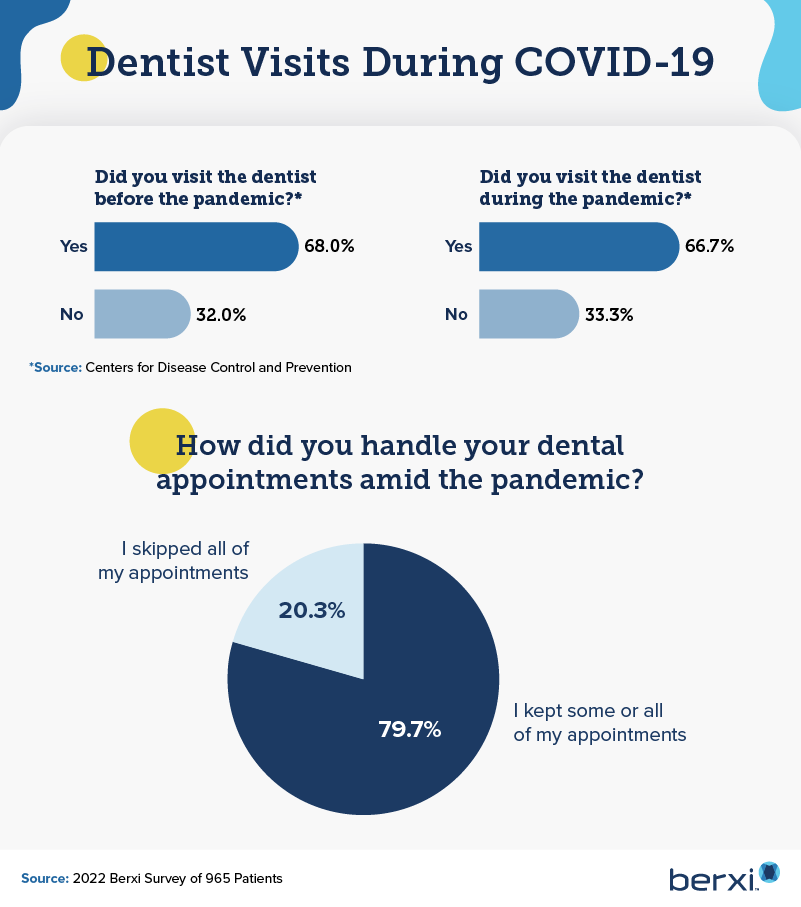
In positive news, it appears dentistry stayed mostly on track during the pandemic. The percentage of those who visited the dentist before and during COVID remained roughly the same. In the past few pandemic years, almost 80% of respondents kept some or all of their appointments.
Dentistry Going Forward
Patients and dental professionals share more similarities than differences when it comes to their oral hygiene. Of course, knowing what to do doesn’t always translate into doing it, as our findings show. From feelings of anxiety, to concerns about pain, to complaints about scheduling or waiting, patients and dental professionals face certain obstacles to maintaining optimal dental health. And there are plenty of areas for improvements, to help patients (including the dentists themselves!) make the dental experience less stressful or frustrating.
Methodology & Limitations
For this study, we collected responses from 330 dental professionals and 965 patients. Dental professionals surveyed included dental assistants, dental hygienists, dental lab technicians, general dentists, orthodontists, periodontists, and oral surgeons. To help ensure that all respondents took our survey seriously, they were required to identify and correctly answer an attention - check question. Please note that survey data have certain limitations related to self - reporting.
Fair Use Statement
Think the dental health of the U.S. could use a little boost right now? You’re welcome to share this research. Just be sure your purposes are noncommercial and that you link back to this page.